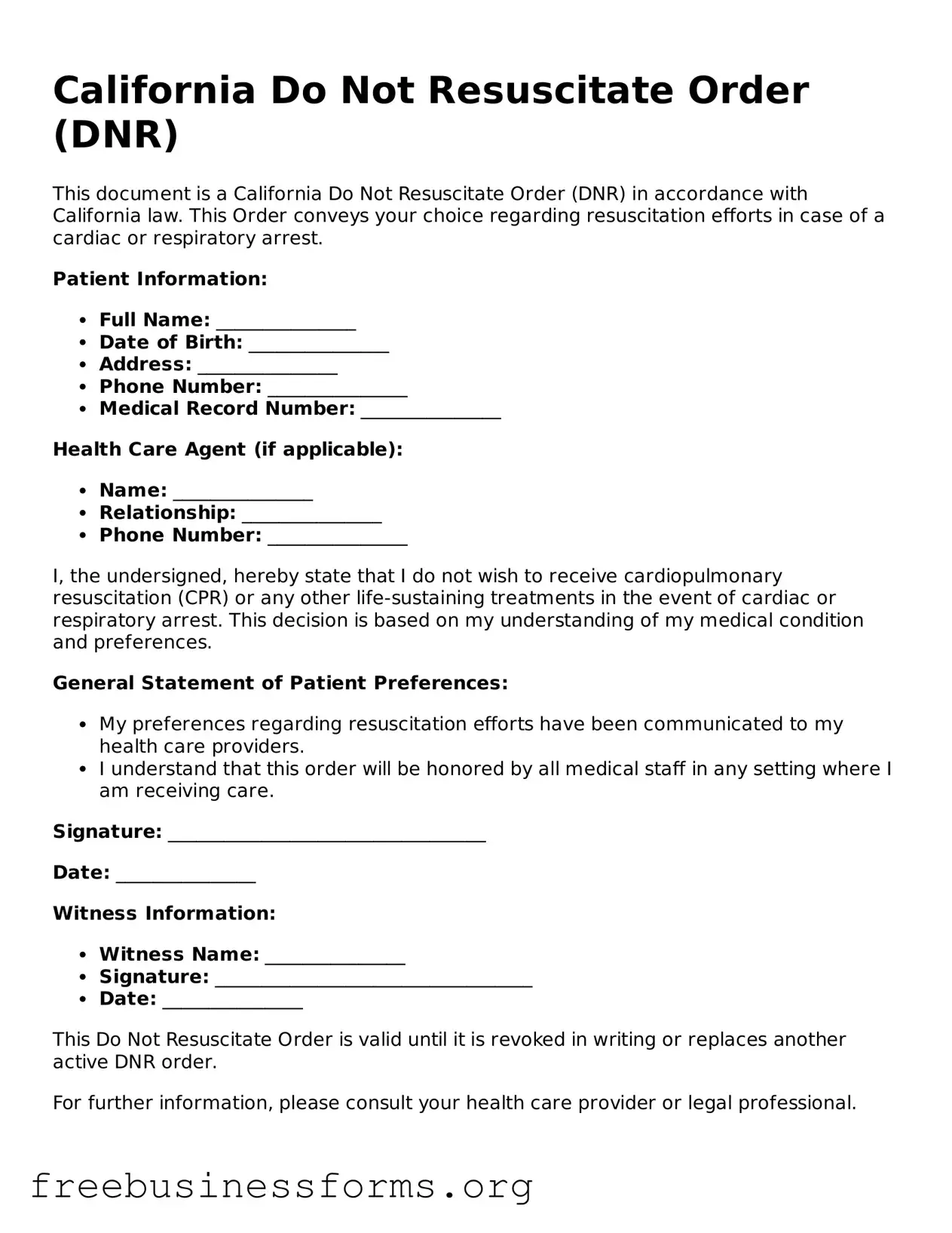California Do Not Resuscitate Order (DNR)
This document is a California Do Not Resuscitate Order (DNR) in accordance with California law. This Order conveys your choice regarding resuscitation efforts in case of a cardiac or respiratory arrest.
Patient Information:
- Full Name: _______________
- Date of Birth: _______________
- Address: _______________
- Phone Number: _______________
- Medical Record Number: _______________
Health Care Agent (if applicable):
- Name: _______________
- Relationship: _______________
- Phone Number: _______________
I, the undersigned, hereby state that I do not wish to receive cardiopulmonary resuscitation (CPR) or any other life-sustaining treatments in the event of cardiac or respiratory arrest. This decision is based on my understanding of my medical condition and preferences.
General Statement of Patient Preferences:
- My preferences regarding resuscitation efforts have been communicated to my health care providers.
- I understand that this order will be honored by all medical staff in any setting where I am receiving care.
Signature: __________________________________
Date: _______________
Witness Information:
- Witness Name: _______________
- Signature: __________________________________
- Date: _______________
This Do Not Resuscitate Order is valid until it is revoked in writing or replaces another active DNR order.
For further information, please consult your health care provider or legal professional.
